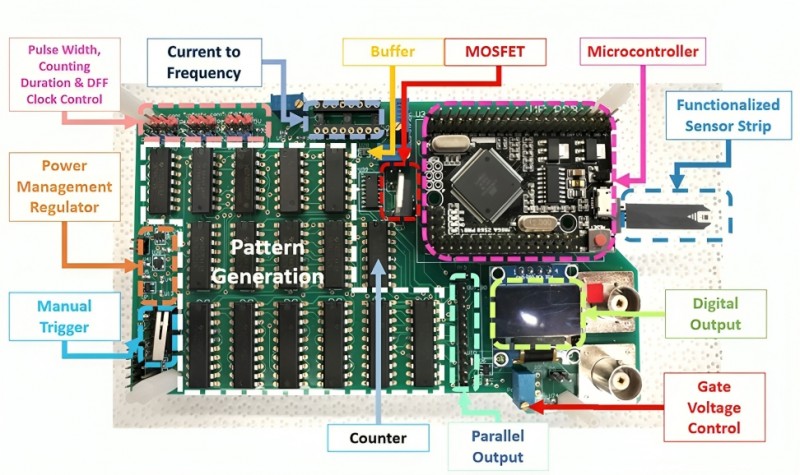
Mammograms are a lifesaving misery for middle-aged women, but a new tool could make getting a breast cancer screening as easy as spitting.
Literally.
A new hand-held biosensor can detect breast cancer biomarkers from a tiny sample of saliva, researchers report Feb. 13 in the Journal of Vacuum Science & Technology B.
“Our device is an excellent choice because it is portable — about the size of your hand — and reusable,” said lead researcher Hsaio-Hsuan Wan, a doctoral student at the University of Florida. “The testing time is under five seconds per sample, which makes it highly efficient.”
The device uses paper test strips treated with specific antibodies that respond to targeted cancer biomarkers, the researchers explained.
When a saliva sample is placed on the strip, pulses of electricity are sent to contact points on the device.
These pulses cause the biomarkers to bind to the antibodies, which alters the electrode’s output signal enough to provide readings regarding cancer risk.
By comparison, mammograms, ultrasounds and MRI scans are all costly and require big pieces of equipment and low-dose radiation exposure, Wan said.
“In many places, especially in developing countries, advanced technologies like MRI for breast cancer testing may not be readily available,” she added in a university news release.
“Our technology is more cost-effective, with the test strip costing just a few cents and the reusable circuit board priced at $5,” Wan added. “We are excited about the potential to make a significant impact in areas where people might not have had the resources for breast cancer screening tests before.”
The device can provide accurate test results with just a drop of saliva, even if the concentration of the cancer biomarker is a minuscule one-quadrillionth of a gram per milliliter.
One of the biomarkers involves human epidermal growth factor receptor 2 (HER2), a protein that drives 15% to 20% of invasive breast cancers. Another is CA 15-3, an antigen released into the bloodstream by breast cancer.
Results showed the device could distinguish between healthy breast tissue, early breast cancer and advanced breast cancer, using those two biomarkers. Researchers tested the device in 21 human saliva samples.
“The highlight for me was when I saw readings that clearly distinguished between healthy individuals and those with cancer,” Wan said. “We dedicated a lot of time and effort to perfecting the strip, board and other components. Ultimately, we’ve created a technique that has the potential to help people all around the world.”
More information
The American Cancer Society has more about breast cancer screening.
SOURCE: Journal of Vacuum Science & Technology B, news release, Feb. 13, 2024
Source: HealthDay

Leave a Reply